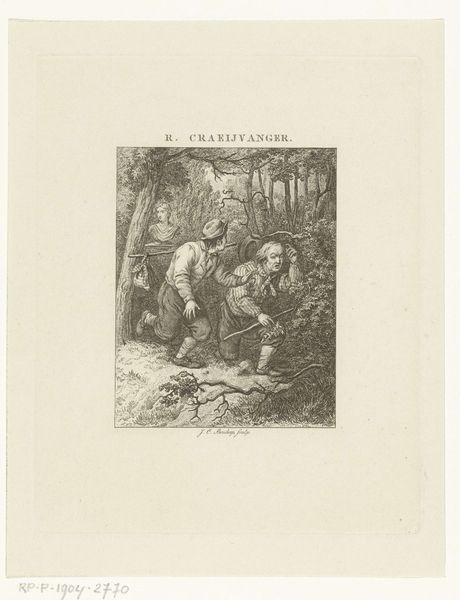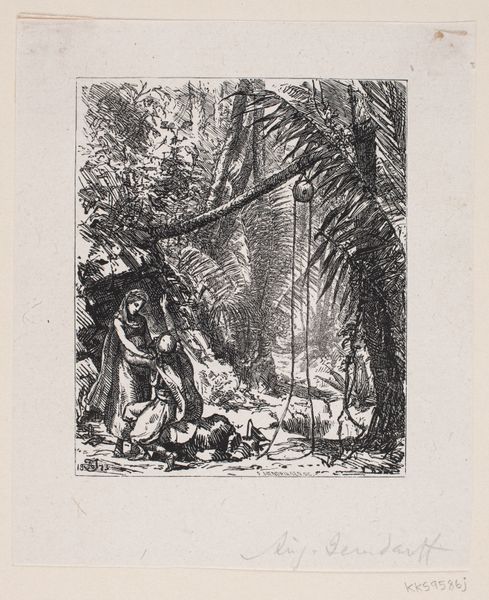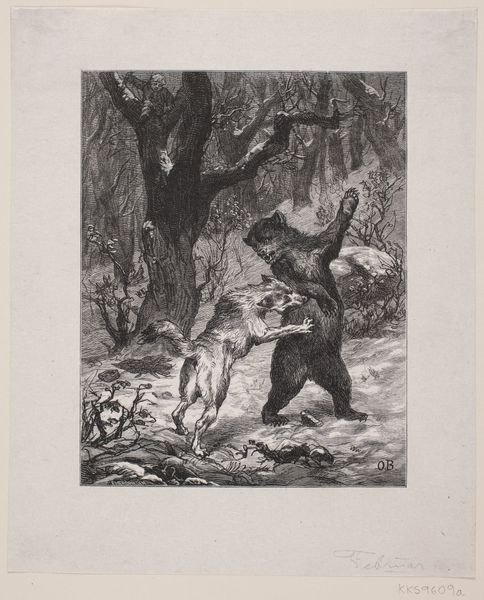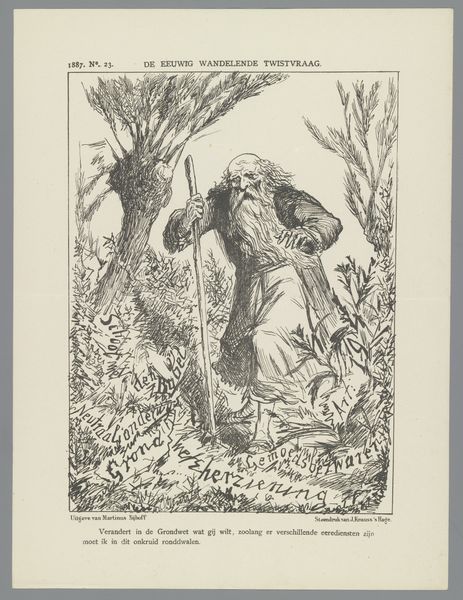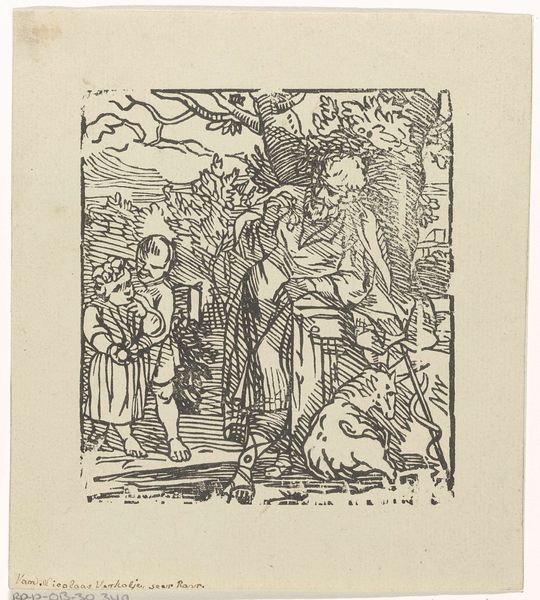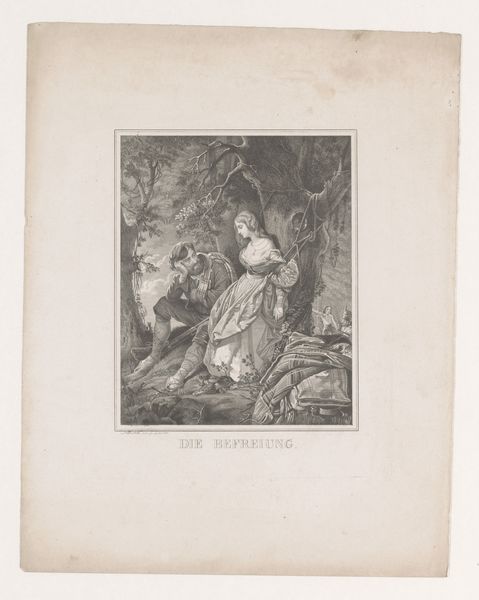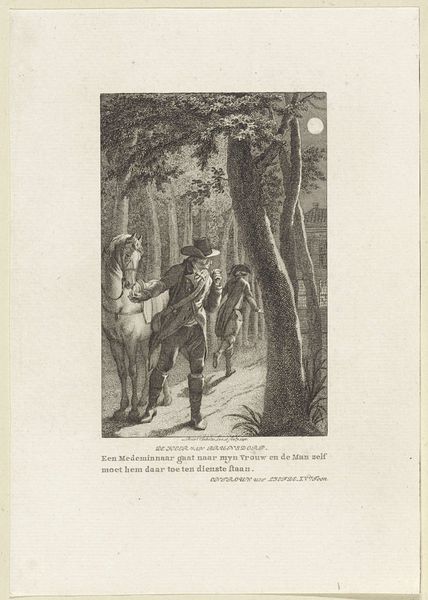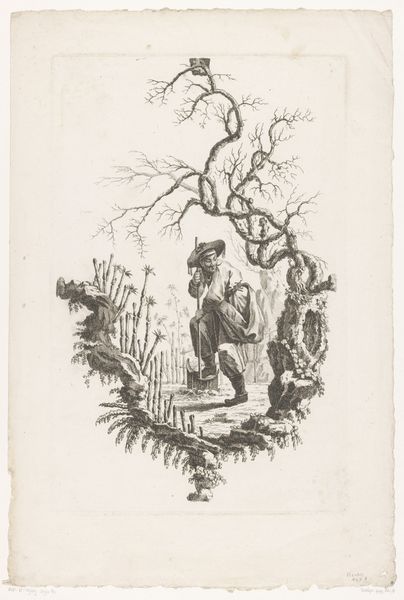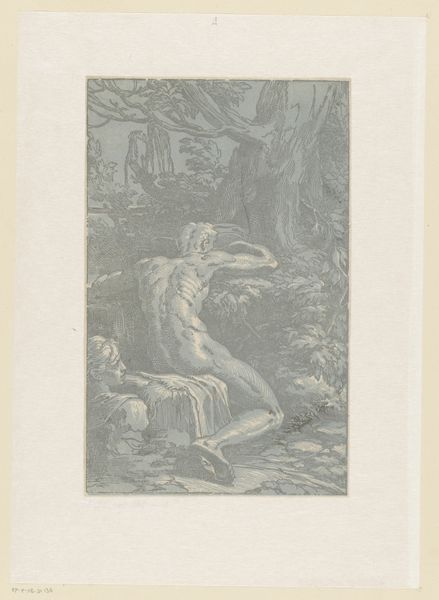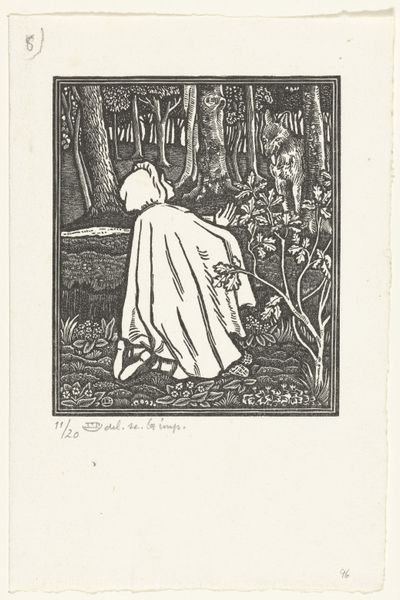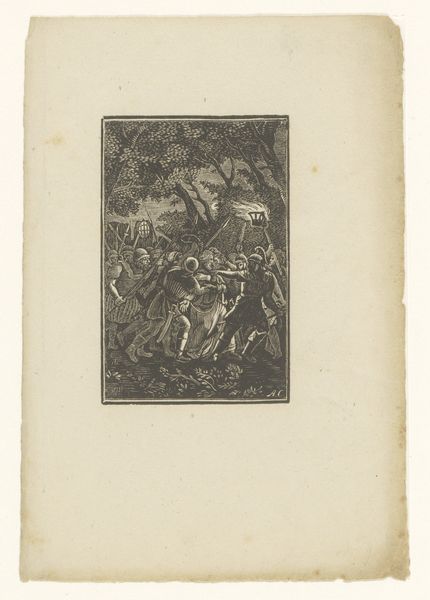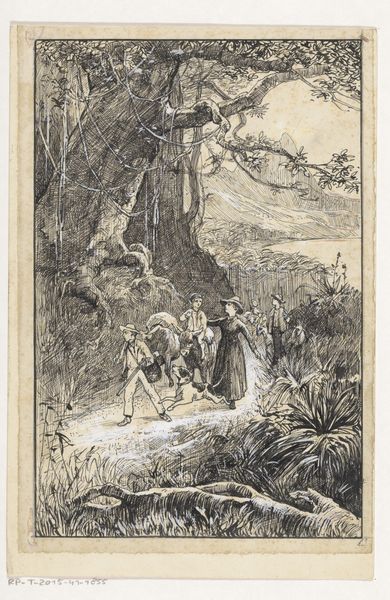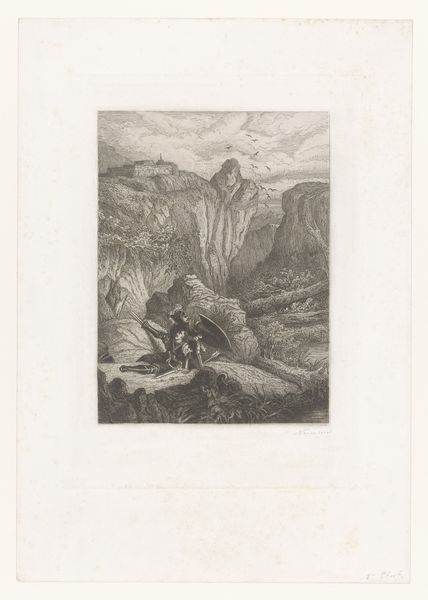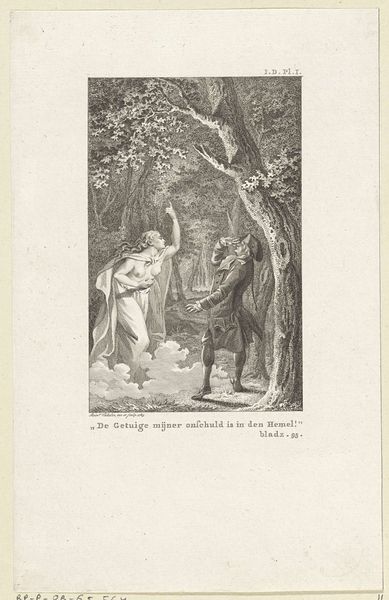
Dimensions: height 281 mm, width 192 mm
Copyright: Rijks Museum: Open Domain
Curator: At first glance, this feels like an illustration from a fairytale, but tinged with a rather melancholic mood. Editor: Indeed. The piece before us is a print from 1922-23, entitled "Modes et Manières d'Aujourd'hui, Pl. 6: La Chasseresse" by Fernand Siméon. As part of a series, it’s presented as a fashion plate, but engages with much more complex ideas around gender and representation. Curator: A fashion plate? Really? With such dark lines, this looks anything but fashionable at first glance. More like a figure obscured by shadow, hidden away in a stylized forest. I’m struck by the rather unnerving way she’s turned away, eyes shielded. Editor: It's that averted gaze which draws me in. The 'chasseresse' – huntress – is almost an archetype here. Throughout history, the huntress figure carries the symbolic weight of self-sufficiency and the untamed woman, connected to nature, empowered and independent. Diana, for instance. Curator: Certainly. We see it even in contemporary portrayals, and it feels particularly significant during the interwar period. This image arrives just after women have fought for increased political participation, yet find themselves in a society that is also desperate to return to ‘normal’. To older structures. Editor: Notice the deer in the background, looking almost sorrowfully at the huntress. Siméon contrasts the fashionable figure with other potent symbols – the rabbits nestled near her feet represent fertility and vulnerability. The sleeping dog speaks of domesticity. Curator: Are we seeing then an argument for woman as part of nature versus woman confined by domestic expectation? It's a rather poignant tension rendered in these strong lines. She almost blends into the forest, while simultaneously wearing a distinct tartan skirt! Editor: Absolutely! Fashion here almost becomes a type of camouflage. A way to navigate these conflicting social expectations while remaining, to some degree, unreadable. Curator: It provides us with insight to the push and pull women would face post WWI; Siméon shows a woman both connected and at odds with her landscape, human and societal. Editor: The print becomes more than just an image of contemporary fashion; Siméon crafted it to hold our collective hopes and anxieties.
Comments
No comments
Be the first to comment and join the conversation on the ultimate creative platform.
